|
SS IMPERATOR,
SS VATERLAND,
SS BISMARCK
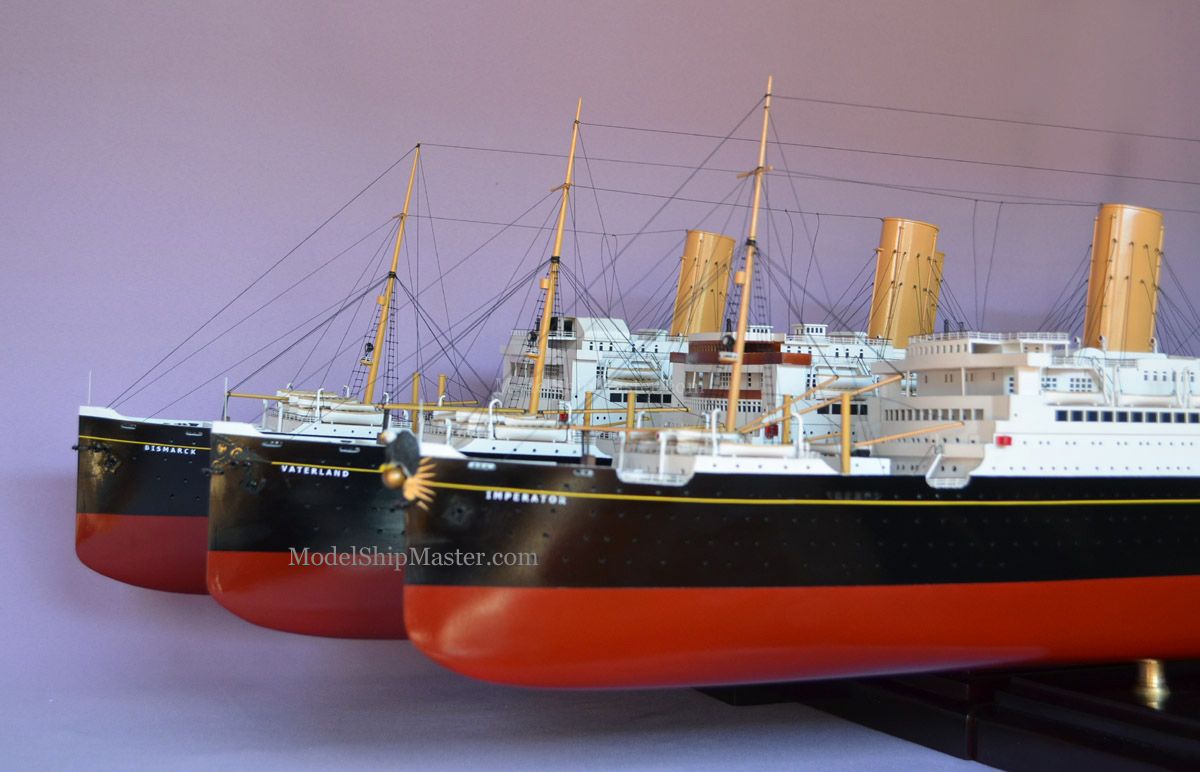
SS
Imperator was the pride of the Hamburg America Line
as it surpassed the RMS Titanic in length and became the
largest passenger ship in the world. Imperator was
an imposing and inspiring sight upon her completion in
June 1913. A monstrous eagle perched upon the tip
of the bow with wings spread. This beast had
a real purpose besides intimidating: the length of it
made the Imperator longer than the RMS Aquitania,
allowing the Germans to proclaim Imperator as the
largest ship in the world.
Designed by architect Charles Mewès, the Imperator's
interiors were specifically designed to beat Cunard
line. Kaiser Wilhelm II was adamant about Germany
dominating the ocean liner trade as magnificent new
passenger vessels were seen as a country showing their
strength and the president of Hamburg America Line
Albert Ballin agreed. Imperator was made decorated
like a floating palace. Huge, sprawling public
spaces adorned with skylights and eloquent marble, wood
paneling and plasterwork were all over the ship.
The Imperator's iconic Pompeiian-style swimming pool —
festooned with vividly colored tiles and a metric
mountain of marble-work — is one such example of the
overindulgence in extravagance present in the design of
the liner. The first class dining room was
absolutely transcendent, gleaming in creamy white marble
and dome-topped. The ship's various lounges, fitness
rooms and cabins were equally grand and imposing — much
like those of the Normandie over two decades later.
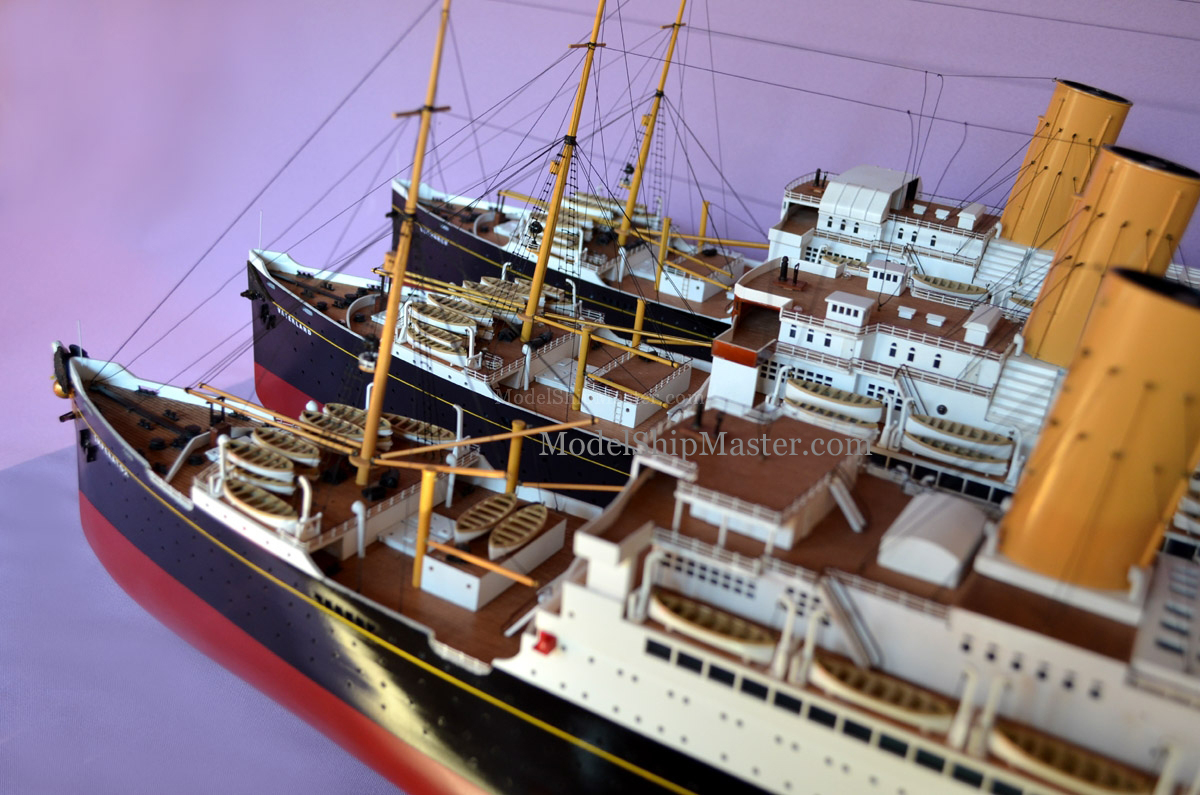
During
World War I, Imperator remained in port in Hamburg.
After the war, she was briefly commissioned into the
United States Navy as USS Imperator and employed as a
transport, returning American troops from Europe.
After that, Imperator was handed over to Britain's
Cunard Line as part of war reparations, and she sailed
as the flagship RMS Berengaria for the final decade of
her career.
SS Vaterland was an the second of three
sister ocean liner ships built for Germany's Hamburg
America Line for their transatlantic passenger service.
She sailed as Vaterland for less than a year before her
early career was halted by the start of World War I.
In 1917, she was seized by the U.S. government and
renamed Leviathan. She would become known by this
name for the majority of her career, both as a troopship
during World War I and later as the flagship of the
United States Lines.
The
last sister ship of the trio--the SS Bismarck was
launched in 1914. At 56,551 gross tons, she was
the largest ship in the world and this record was not
surpassed until the completion of SS Normandie more than
20 years later, in 1935. Her completion was
delayed by World War I. Bismarck never sailed under the
German flag except on her sea trials in 1922.
Following the war, she was finished by her German
builders, handed over to the allies as war reparations
and became the White Star Line flagship Majestic.
In the later years of her service, Bismarck served the
Royal Navy as the training ship HMS Caledonia. She
caught fire in 1939 and sank.
Albert
Ballin, utterly distraught at the thought of having to
hand over Imperator, Vaterland and Bismark in repayment
for Germany's role in the war, took an overdose of
sleeping pills just days before the armistice. In
his passing, the peace-loving director of Hamburg
America Line left parting words in a note "Better an
end with dread than dread without end."
With
the death of Albert Ballin and Charles Mewès (1914), the
special era of majestic German oceangoing atmosphere
died with them. Per writer Corry Reed: We need to
remember that these liners were built by hand. As
hard as the shipyard workers pounded those rivets and
fashioned steel, the architects and designers of these
grand vessels forced their minds and hearts in equal
measure to venture into uncharted and exhilarating
territory.
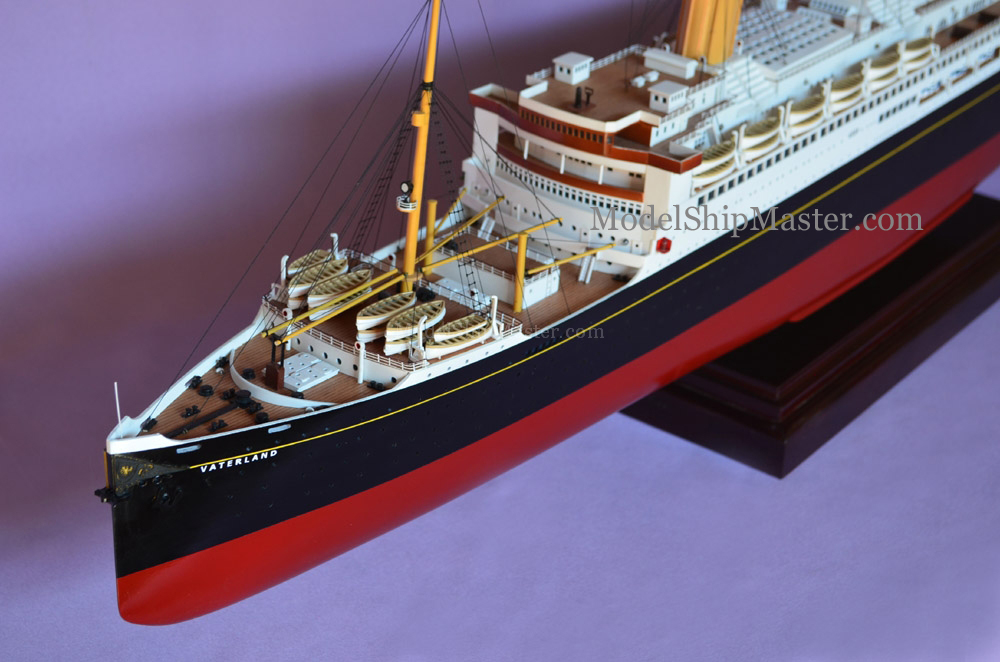
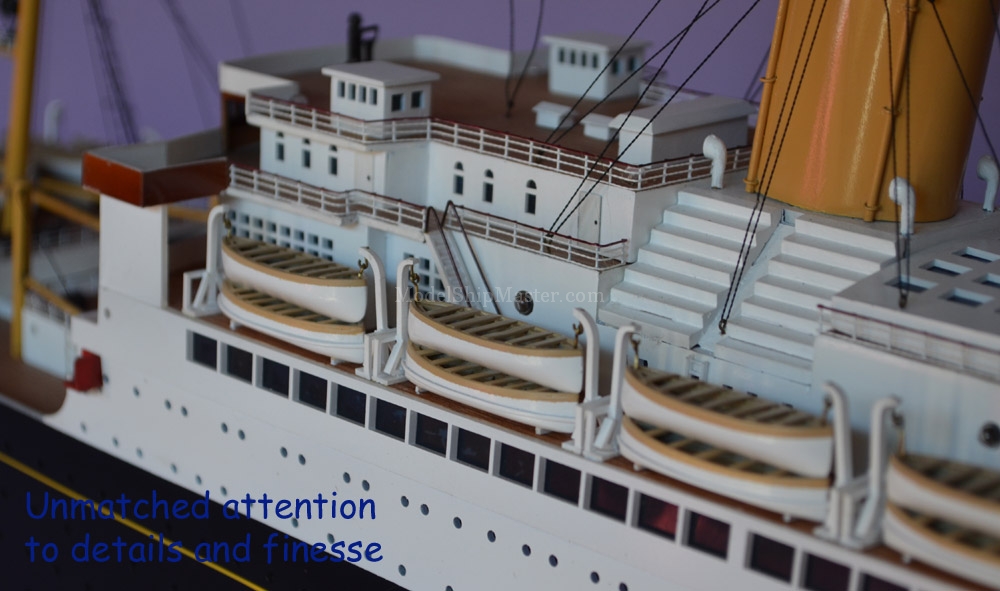
These primarily wooden ocean liner model ships feature:
-
Hollow
hull construction (very important), each weighs less than
15 lbs
(A solid hull of this model would be over 40 lbs
which feels like a heavy log rather than an art piece.)
- Windows are cutouts (not black decals), thanks to
the hollow superstructures.
48" (122 cm) long
$5,990 Shipping and insurance in
the contiguous USA included.
Other places: $500 flat rate.
Model is built per commission only. We require only a
small deposit (not full amount, not even half) to start
the process $500  The
remaining balance won't be due until the boat is
completed,
in several months. The
remaining balance won't be due until the boat is
completed,
in several months.
For display case, please click here:
Model Ship Display Case
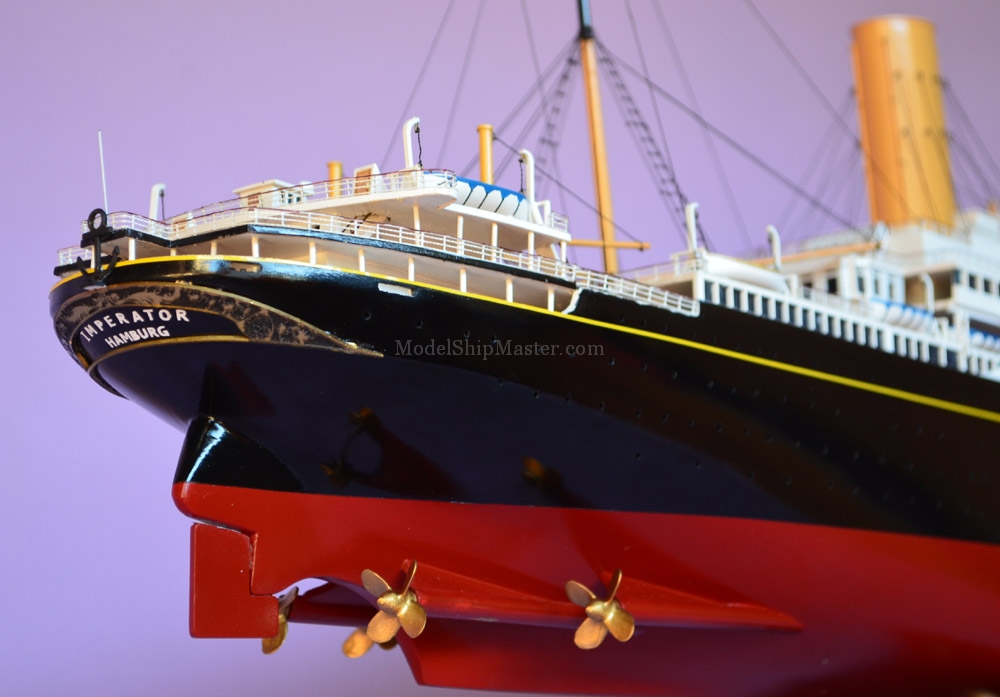
Do not assume anything.
These ships are very difficult to make and many makers
do not dare to show their models at all angles. Whenever
you see a missing angle, you can safely assume that that
model has very bad details or misses important features
in that section. We have seen plenty of junk out there.
They are so wrong, not only details but also hull shape,
colors, many basic principles of ocean liner design.
|